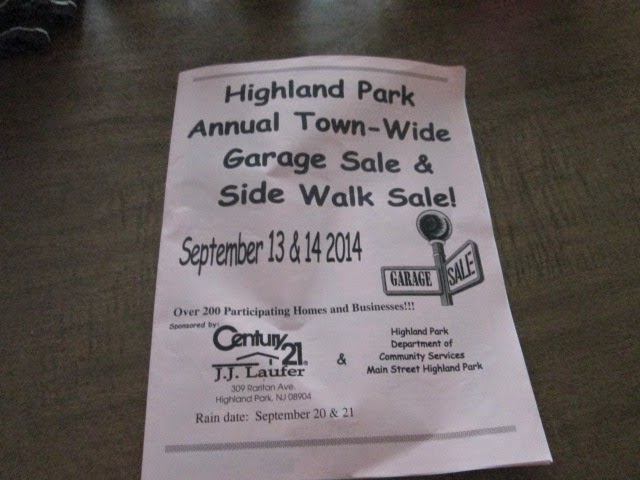Now, that fact alone should have been a warning to me that O'Connor's advice was unlikely to be of any use to me. Just as it isn't possible to lose half your body weight unless you currently weigh twice as much as you need to, it isn't possible to cut $1,000 from your monthly spending unless you're currently wasting $12,000 a year. It's the same problem I've noted on this blog so many times before: most of the financial advice out there on the Web (and green-living advice as well) tends to focus on the easy stuff, the low-hanging fruit, and therefore isn't much use to those of us who already harvested it long ago. (That's why I always try on this blog to talk about newer ideas, or take new approaches to old ones. Instead of just saying, "Hang your laundry," I do the math to figure out how much I actually save by hanging my laundry, and then I discuss some of the less tangible benefits that make this activity worthwhile. Or I share new, budget-friendly vegetarian recipes that Brian has invented. Or I post a just-for-fun roundup of budget decorating ideas.)
Indeed, O'Connor himself concedes in his introductory post that most of his readers probably don't have $1,000 worth of fat to cut from their monthly budgets. The only reason he called it the $1,000 Challenge, he frankly admits, is "because it made a good headline"; a more realistic goal might be anywhere from $50 to $500 a month. So at this point, I knew two things about this author: 1) he used to be slack enough in his spending habits to have $12,000 worth of excess to cut, and 2) he doesn't care overmuch about accuracy, since he has no scruples using a deliberately misleading headline to get users to click on his article. Neither of which makes him sound like a great person to be taking financial advice from.
By this time, though, he'd managed to pique my interest. Even if I knew there was virtually no chance that his plan could actually save me $1,000 a month, I was still curious about how it had managed to save him $1,000 a month. Where had he managed to find that much excess to cut?
So I went ahead and read the next article in the series, which O'Connor calls "cleaning out your financial 'junk drawer.'" Just as most of us have a junk drawer in our homes, he says, in which we toss all sorts of odds and ends and then forget about them, so most of us have "odds and ends that pile up, unseen or at least unconsidered, usually on credit cards or via automated checking account debits." He says when he went over his family's monthly statements, he discovered several automatic payments of this sort. The worst of the lot was an old email account that he'd meant to keep open for just one year in case any of his old clients tried to use it and had ended up leaving open for over two years, at $25 a month. And then came the line that really boggled my mind:
If I had been getting a bill in the mail every month for that e-mail account, and had to sit down, write a check, dig out my nifty return-address labels (I know they're around here somewhere), then find a stamp, I would have cancelled that account ages ago. But the charge went directly onto a credit card, where it was easy to overlook.Easy to overlook?!? How could you have a $25 charge on your credit card bill every single month for over two years and not notice it? When I get the bill for one of my credit cards, I don't pay it until I've gone through it line by line to make sure that all the charges match the amounts on my payment slips. (I actually had a minor dilemma last month over whether to call the company to dispute a charge of $25.76 at a restaurant, because the slip said we'd only paid $24.76—$20.76 for the bill and $4 for the tip. I only let it go because Brian said he couldn't be completely sure he hadn't written down different amounts on our copy and the restaurant's.) So if there were a $25 charge showing up every month for a service I was no longer using, I would definitely notice it was there. For O'Connor to simply "overlook" this charge on his bill, he must not have been checking his statements at all; he was probably just automatically paying the total (or worse yet, automatically paying just the minimum) without even bothering to look at the individual charges. His bill could have been loaded up with charges that were not only unnecessary but completely fraudulent, and he'd never have noticed they were there.
Reading that one line was enough to convince me to read no further. Knowing that this guy had been careless in his spending habits was one thing, but once I'd learned that he didn't even check his bills before paying them, I knew I wasn't about to trust his advice on anything money-related.
So, for all those who were hoping that this post was going to kick off a series on how I embarked on my own $1,000 Challenge, I'm sorry to disappoint you. I don't think I'll be cutting $1,000, or $500, or even $100 a month from our budget, and for a very good reason: because we don't have it to cut. If we had $100 worth of completely unnecessary spending in any particular category of our budget, I'm pretty sure we'd have found it and cut it already. But even if there actually are some hidden expenses lurking in our budget—some clever cost-cutting strategies that we somehow haven't heard about yet—I feel very confident that we're not going to learn about them from Brian O'Connor.
































